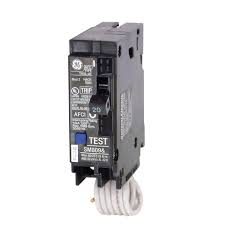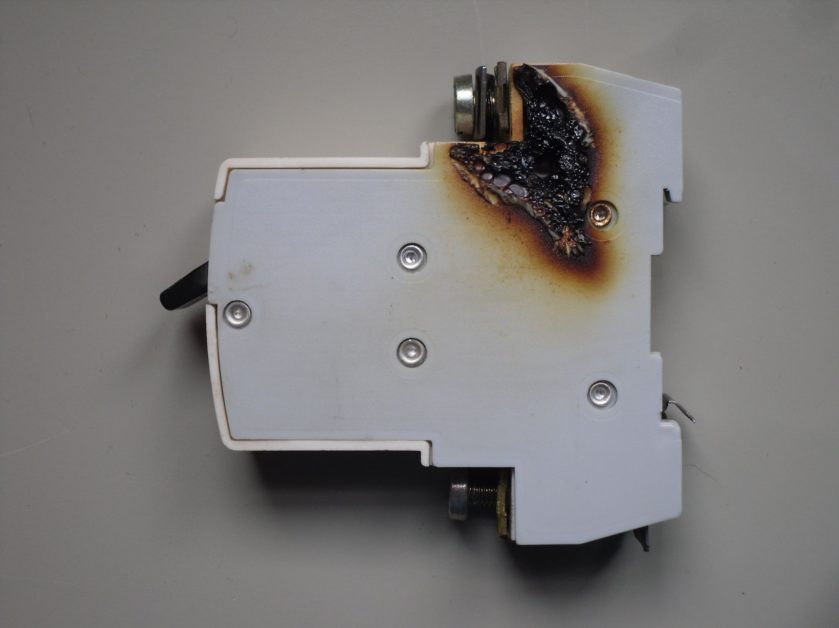Does a Circuit Breaker Wear Out? (And Prevention Tips)

Ever wonder if your home’s trusty circuit breakers can wear out? Well, you’re in for a bit of a revelation.
Circuit breakers are essential in our homes that can wear out over time due to tripping damage, electrical arcing, and thermal stress. Despite their crucial role in maintaining electrical safety, they are subject to deterioration and require regular maintenance to function effectively.
In this article, I’ll explore how and why circuit breakers might quit after years of vigilance. So, stick around; you might discover something that’ll spark your interest (pun intended) and keep your home’s electrical system in tip-top shape.
Understanding Circuit Breaker Longevity
I’ve spent a fair share of time wrestling with the nuts and bolts of homes, but let’s dive into something that’s not just nuts and bolts but keeps the lights on – understanding how long circuit breakers last. It’s like knowing how many miles you can drive your car before it asks for some TLC.
First, circuit breakers are like the unsung heroes of your electrical system. They’re designed to last a long time, typically around 30 to 40 years. Yeah, I know, that’s a huge chunk of time!
But like everything in our homes, their lifespan can vary based on several factors, such as the brand, usage, and even the environment where they’re installed.
So, while your old breaker might still be kicking, upgrading could be worth considering, especially if you’re renovating or noticing your electrical system isn’t quite keeping up with your modern needs.
The Science Behind Circuit Breaker Wear and Tear

Have you ever wondered why these little guardians of our electrical safety, our circuit breakers, wear out? Strap in because I’m diving into the nitty-gritty of circuit breaker wear and tear.
- Tripping Damage: Every time a breaker trips, it sustains a bit of damage, similar to a football player taking a hit. Repeated over many years, these hits accumulate.
- Electrical Arcing: The spark that occurs when a breaker trip causes wear over time, leading to worn-down contacts within the breaker. This can impair the breaker’s ability to trip when necessary, posing a safety hazard.
- Heat and Thermal Stress: Circuit breakers experience thermal stress due to heat, causing components inside to expand and contract. Over time, this mechanical wear can affect how well the breaker’s components fit and function together.
- Regular Load and Occasional Overloads: The standard electrical load and occasional overloads a breaker handles contribute to its gradual wear and tear.
But here’s the kicker: keeping an eye on them with regular check-ups can help catch issues early. Monitoring and maintenance are key to extending the life of these critical components in our homes.
Warning Signs of a Circuit Breaker Wearing Out

Have you ever walked into a room, flipped the switch, and nothing happened? Or, worse, had your favorite show cut off because the power just zapped out?
- Frequent Tripping—I don’t mean the kind you do over your kid’s toys. I’m referring to a breaker that trips frequently. It’s like it’s saying, “Hey, I’m working too hard here!” If your breaker trips more often than it stays on, it’s a clear signal that something’s up. This could be due to overloads, short circuits, or a case of good old wear and tear.
- Humming or Buzzing Sounds – These sounds can indicate a loose connection or a breaker struggling to maintain power flow. It’s like when I’m trying to carry five plywood sheets at once; something will give.
- Physical Signs – I’m discussing scorch marks, rust, or deformities. It’s like looking at a truck after a mud run; you know it’s been through some tough times. These signs suggest that the breaker has faced serious stress and might no longer be up to the task.
- Power Fluctuations – Lights dimming or flickering could indicate that the circuit breaker is struggling to distribute power evenly and might be nearing the end of its lifespan.
Remember, these symptoms are your circuit breaker’s way of crying out for help. Regular check-ups can prevent these issues and ensure your home stays lit (and powered) exactly when needed.
What to Do if a Circuit Breaker Has Worn Out

Alright, folks! We’ve talked about how to spot a tired circuit breaker, but let’s dive into keeping it young and spry. Preventing wear and tear on these bad boys isn’t just smart; it’s essential for the safety and longevity of your home’s electrical system.
- Regular Maintenance – We need check-ups, and so does your circuit breaker. Ensuring that everything’s tight and right can save you a world of hassle down the road. This includes tightening connections and inspecting for any signs of damage or wear. Calling a professional electrician is the way to go if things look out of sorts. They’ve got the know-how to spot trouble before it becomes a disaster.
- Upgrade to AFCIs – These are like the superheroes of circuit breakers. They’re designed to prevent fires by shutting down the current when they detect dangerous arc faults. This upgrade can significantly enhance safety and extend the life of your electrical system.
- Balance Electrical Load – I can’t stress enough how important this is. An unbalanced load can stress your circuit breaker, leading to frequent trips and, eventually, failure. Make sure heavy-drawing appliances aren’t all on the same circuit. It might require some planning, but it’s worth it in the long run.
- Monitor Appliance Age – Older appliances can start acting up, drawing more power than they should, which puts additional strain on your breaker. Upgrading to more energy-efficient models saves you money on your electricity bill and keeps your circuit breaker in good health.
By taking these steps, you’re not just extending the lifespan of your circuit breaker; you’re also enhancing the overall safety and efficiency of your home’s electrical system. It’s a win-win—extra points for safety and savviness.
Frequently Asked Questions
- Can I Fix a Circuit Breaker Myself?
- For minor issues like resetting a tripped breaker, sure. For repairs or replacements, consult a pro unless you’re experienced with electrical work.
- How to Test a Breaker’s Functionality?
- Flip the breaker off and on. If it stays on, it’s likely okay. For deeper issues, a professional or multimeter test is recommended.
- Is It Safe to Keep Resetting a Tripper Breaker?
- Constantly resetting a tripper without addressing the root cause is risky. It’s a sign to investigate further, possibly with professional help.
- What’s the Difference Between AFCI and GFCI Breakers?
- AFCIs protect against fires caused by electrical arcs. GFCIs prevent electric shock, especially in wet areas. Both add layers of safety to your electrical system.
- What’s the Cost of Replacing a Circuit Breaker?
- The cost can vary widely depending on the type of breaker and labor rates in your area. Generally, expect anywhere from $100 to $200 for a replacement by a professional electrician, excluding any additional repairs or upgrades needed.
Resources
Organizations
- National Fire Protection Association (NFPA) –https://www.nfpa.org/en
- Electrical Safety Foundation International (ESFI) – https://www.esfi.org/
- Institute of Electrical and Electronics Engineers (IEEE) – https://www.ieee.org/
Books
- “Electrical Safety Handbook” by John Cadick, Mary Capelli-Schellpfeffer, Dennis K. Neitzel, Al Winfield – https://books.google.com/books/about/Electrical_Safety_Handbook_4th_Edition.html?id=e2q3Ei_9BVwC
Website Resources
- ElectricianTalk – https://www.electriciantalk.com/
- Mike Holt – https://www.mikeholt.com/
